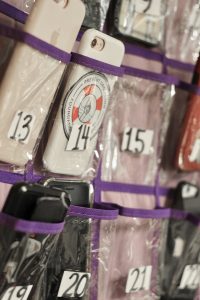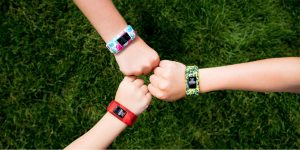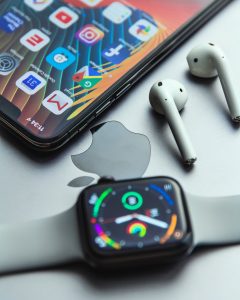 Coronado High School “Islanders” returned to the academic year with a new policy instituted: No More Cell Phones in Backpacks. Now students must place their phones in numbered slots on a wall-mounted organizer when they enter the classroom. The intended effect is to maximize educational learning by decreasing smart device distractions.
Coronado High School “Islanders” returned to the academic year with a new policy instituted: No More Cell Phones in Backpacks. Now students must place their phones in numbered slots on a wall-mounted organizer when they enter the classroom. The intended effect is to maximize educational learning by decreasing smart device distractions.
So what initiated this “small change?”
For starters, the old policy allowed for each teacher to define their classroom’s “cell phone use” guidelines. Unfortunately, this generated a power struggle between teacher and student due to differing approaches.
CHS also participated in Screen Free Week last year, where teachers engaged in critical conversations discussing screen time with students and reported significant improvements in learning.

Principal Shane Schmeichel acknowledges the “draw to the device is strong” and says “students know there is a problem when it comes to their cell phone use.” When he first presented this new concept to the PTO, opinions were across the board. But, since its inception, CHS has received only praise from parents or staffers.
CHS believes the school environment is “ultimately about the culture of learning” and that should encompass scholastic instruction with social and emotional learning.
And the results so far–astounding.
One CHS English teacher, Jean Pehrsson, declares the policy is having a “wonderful effect on the classroom environment. Students are more focused and engaged.”
But, policies on smart devices aren’t limited to the “Islander” campus.
The Coronado Unified School District seems to be taking a page from Cal Newport’s theories on “digital minimalism” and “deep work.” Like Newport’s idea on removing distractions to improve focus on thinking tasks, CUSD also instills limitations to address technology distractions.
Village and Silver Strand Elementary Schools require students to keep mobile and tablet devices in their backpacks while on campus. However, the trend of younger students owning smartwatches over smartphones, continues to be a developing concern for school officials, says VES Assistant Principal Tanya White.
Today’s parents seem to prefer smartwatches for grade-schoolers because they provide the basics of communication—talk/text functions without internet access and social media triggering parental anxiety.

Jenny Moore, Principal at Silver Strand, observes students as young as kindergarten wearing smartwatches. She points out that while parents mainly use them for communication, they may also be tracking their children.
“They are, however, a distraction,” Moore admits, “and we’ve had students call parents from class/campus, creating concerns for school and family. We are asking that children remove them upon arrival and put them back on when they dismiss.”
Moore states, “[they] will be reminding parents of this expectation throughout the year.”
Technology isn’t completely barred from Silver Strand classrooms. The school implements Hapara, a program with safety measures designed to maximize learning time. Teachers use this tool to assign a page or project while monitoring student screen use and navigation.
Although CUSD elementary schools view smartwatches and phones as a continued distraction, they acknowledge there isn’t much concern for this age group regarding issues like cyberbullying. However, on a campus filled with texting ‘tweens, Coronado Middle School places these topics at its forefront.
CMS Assistant Principal, Brooke Falar, helps spearhead the initiative to teach middle schoolers how to be responsible smart device users. Holding a campus-wide assembly at the beginning of the year, CMS discusses cell phone use and cyberbullying with students. It also addresses them in daily broadcasts and in-class conversations.

While some CMS students need reminders about its “no cell phone” policy, Falar’s next comment echoes Silver Strand’s problem, “it can be challenging when parents text their children during school hours.”
However, the Bring Your Own Device program, “personalized education for every child…to help each unique student learning need,” seems to conflict with the campus-wide “no cell phone policy.” The CMS 2019-2020 Handbook states that acceptable devices range from laptops, netbooks, Chromebooks, iPads, to smartphones and other pertinent technology.
Falar asserts that “device” usually refers to laptops or tablets. She clarifies, “we want to give teachers the flexibility to let students use a phone in class if they deem it appropriate, however, this is not usually the case.”
Although there are differing policies for age groups, CUSD is making strides on its campuses and continues to explore and challenge how students, staffers, and parents approach smart devices.




